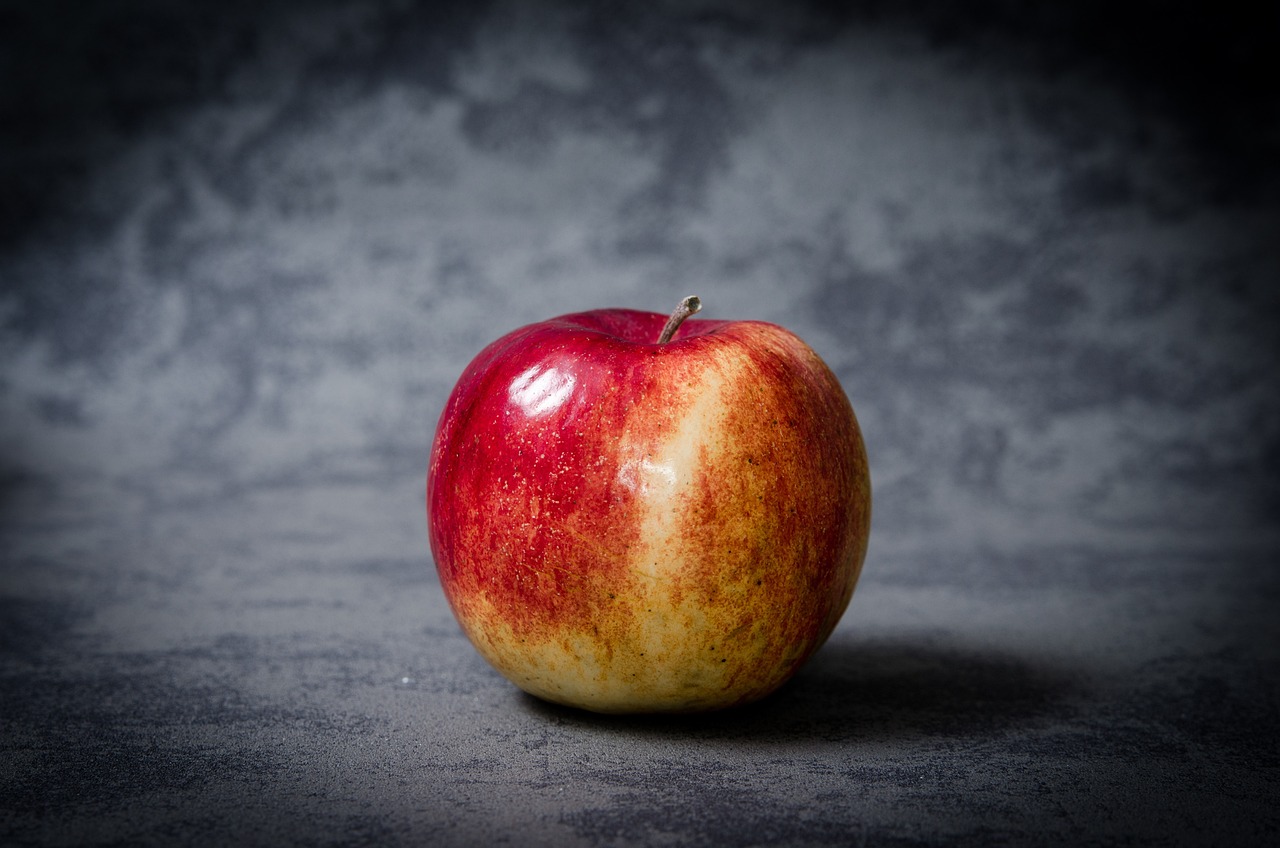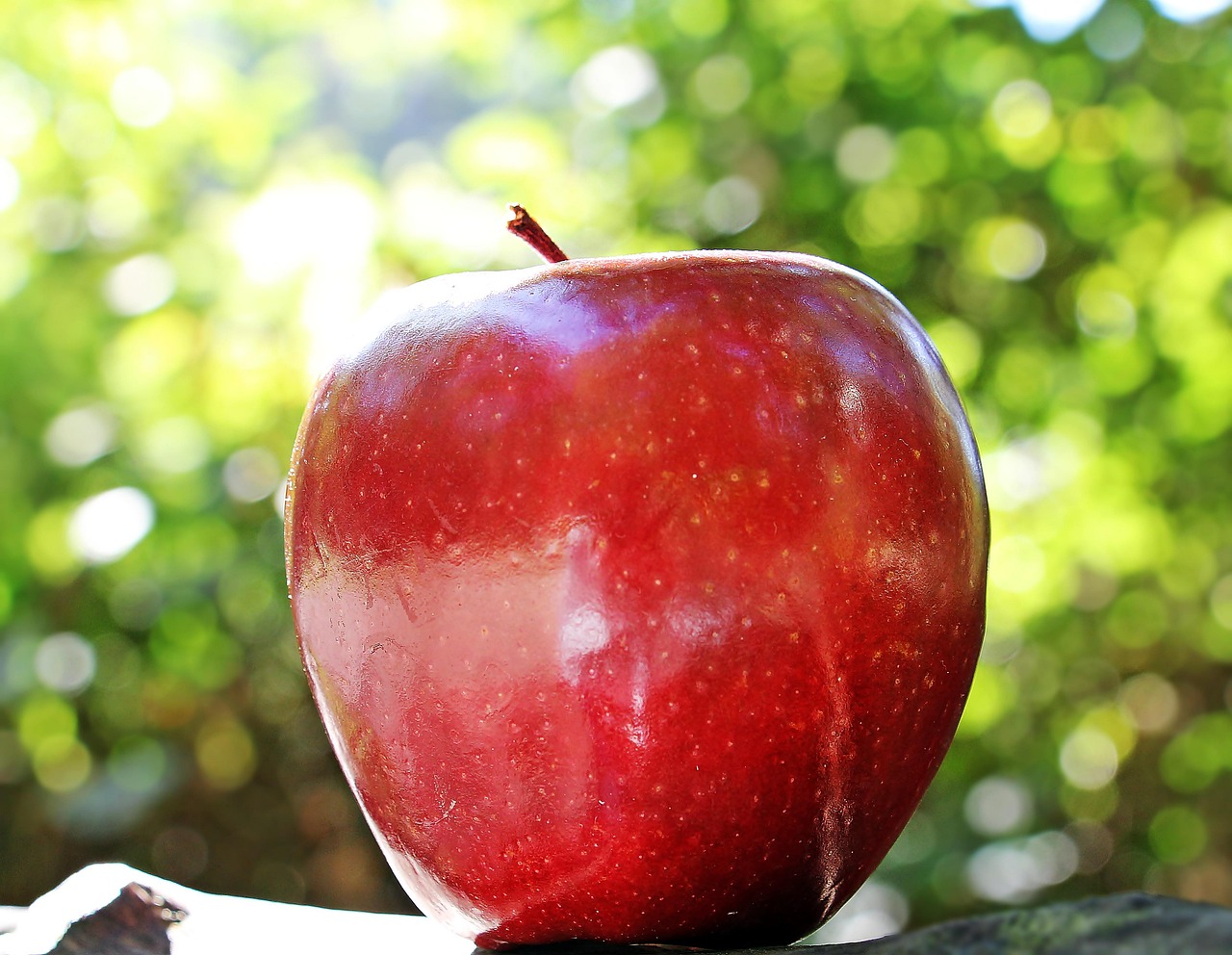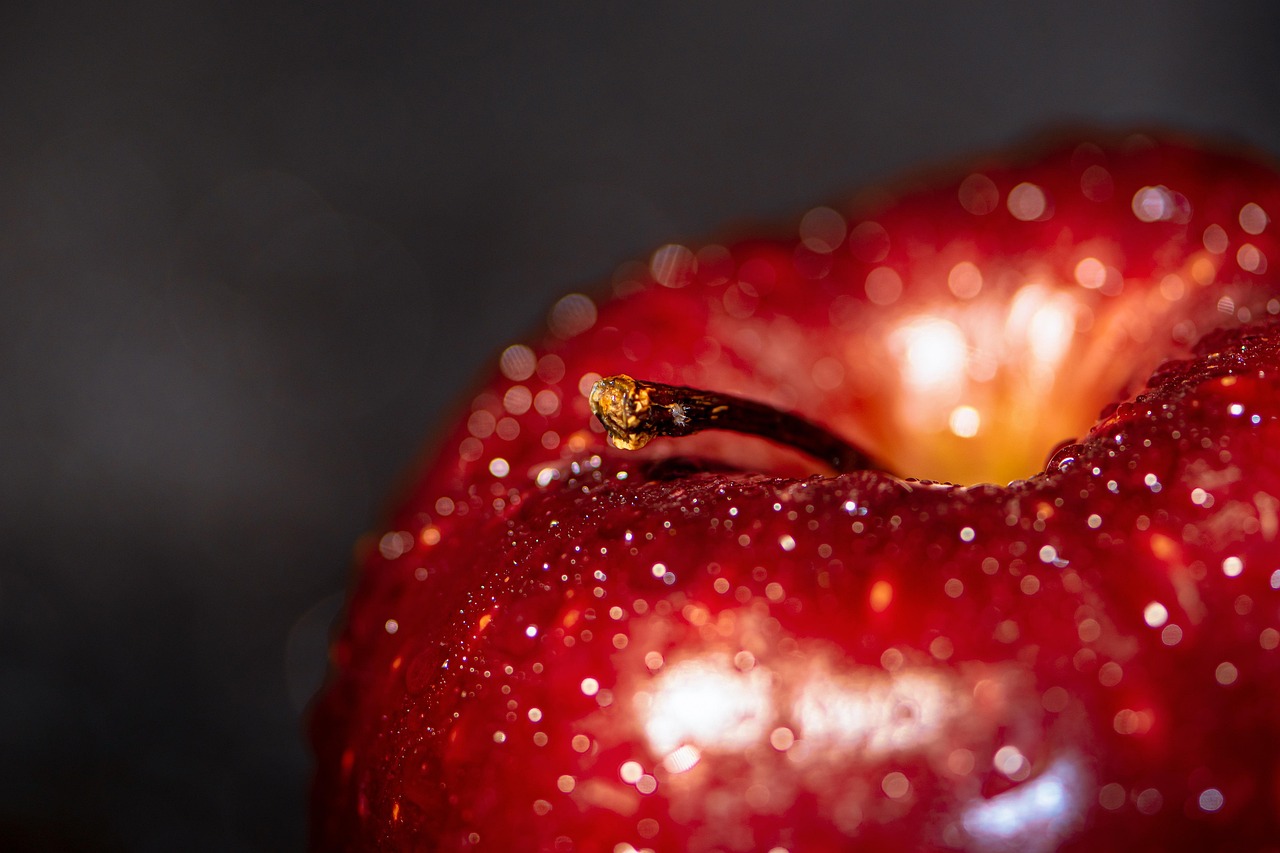The Red Delicious apple tree typically has a growth rate of 1 to 2 feet per year under optimal conditions, making it a moderately fast-growing variety suitable for fruit farms.
Understanding Red Delicious Apple Trees
The Red Delicious apple tree is one of the most popular apple varieties cultivated in the United States. Known for its deep red color and sweet flavor, this apple is favored by consumers and farmers alike. The tree itself is characterized by its vigorous growth and can reach heights of 20 to 25 feet when fully mature. With proper care, these trees not only produce abundant fruit but also provide an attractive addition to any orchard.

Growth rate is a critical factor for fruit farms. Understanding how quickly the Red Delicious apple tree grows helps farmers plan for planting, maintenance, and harvesting. The right growth conditions can significantly enhance the yield and quality of the fruit produced. Factors such as soil quality, climate, water availability, and care practices all contribute to how well these trees thrive.
Factors Influencing Growth Rate
Several key factors influence the growth rate of Red Delicious apple trees. These include:
- Soil Quality: Well-draining soil rich in nutrients supports healthy tree growth.
- Climate: Ideal temperatures for growth range from 75°F to 85°F during the growing season.
- Watering: Consistent moisture is essential, especially in early years.
- Sunlight: Full sun exposure promotes vigorous growth and fruit production.
- Pest Management: Controlling pests and diseases ensures healthy tree development.
By paying attention to these factors, fruit farmers can optimize the growth rate of their Red Delicious apple trees. Each factor contributes to the overall health of the tree, which in turn affects its productivity and longevity.

Growth Stages of Red Delicious Apple Trees
The growth of Red Delicious apple trees can be divided into several stages. Each stage has unique characteristics and requirements that farmers should be aware of:
| Growth Stage | Description | Duration |
|---|---|---|
| Planting | The initial stage where young trees are planted in the orchard. | Spring or Fall |
| Establishment | The tree develops roots and begins to grow upward. | 1-3 Years |
| Vegetative Growth | The tree grows leaves and branches, preparing for fruiting. | 3-5 Years |
| Fruit Production | The tree begins to produce apples, reaching peak production over time. | 5+ Years |
During the establishment phase, farmers must provide ample water and nutrients to support root development. This period is crucial as it sets the foundation for future growth. Following establishment, the vegetative growth stage sees the tree focusing on leaf and branch development, which is vital for photosynthesis and, ultimately, fruit production.
Expected Yield Over Time
The yield of Red Delicious apple trees varies as they mature. In the early years, yields may be modest, but as the trees reach full maturity, production can significantly increase. A mature Red Delicious apple tree can produce anywhere from 200 to 600 apples per year depending on its health and growing conditions. Understanding this trend helps farmers project their harvests and plan their marketing strategies accordingly.

In summary, knowing the growth rate and factors influencing it is essential for successful apple farming. Farmers can enhance their orchard’s productivity by taking proactive measures throughout each growth stage.
Best Practices for Growing Red Delicious Apple Trees
To achieve optimal growth and fruit production from Red Delicious apple trees, farmers should implement several best practices. These strategies focus on enhancing tree health, maximizing yield, and ensuring high fruit quality. Below are essential practices that fruit farmers can adopt.
Soil Management
Soil quality plays a vital role in the growth of Red Delicious apple trees. Proper soil management involves:

- Soil Testing: Regular soil tests help determine pH levels and nutrient content. Ideal soil pH for apple trees is between 6.0 and 7.0.
- Amendments: Adding organic matter such as compost can improve soil structure and fertility.
- Drainage: Ensuring good drainage prevents root rot and other diseases.
By managing soil health effectively, farmers can create a robust environment for their apple trees to thrive.
Irrigation Techniques
Proper irrigation is crucial during the establishment phase and throughout the tree’s life cycle. Here are some recommended irrigation techniques:
- Drip Irrigation: This method delivers water directly to the root zone, minimizing waste and promoting efficient water use.
- Scheduled Watering: Implementing a consistent watering schedule helps maintain moisture levels, particularly during dry spells.
- Mulching: Applying mulch around the base of the trees retains moisture and regulates soil temperature.
Adopting these irrigation techniques can significantly enhance the growth rate and overall health of Red Delicious apple trees.
Pest and Disease Management
Pest and disease issues can adversely affect the growth and yield of Red Delicious apple trees. Implementing an integrated pest management (IPM) strategy is essential. Key components include:
- Regular Monitoring: Frequent checks for signs of pests or diseases can help in early detection and control.
- Natural Predators: Encouraging beneficial insects, such as ladybugs, can naturally reduce pest populations.
- Cultural Practices: Practices such as crop rotation and proper spacing can minimize disease spread.
A proactive approach to pest and disease management will result in healthier trees and better fruit quality.
Fertilization Guidelines
Fertilization is crucial for providing the necessary nutrients for growth. Farmers should consider the following guidelines:
- Balanced Fertilizers: Use a balanced fertilizer with equal parts nitrogen (N), phosphorus (P), and potassium (K) during the growing season.
- Timing: Apply fertilizers in early spring as trees begin to leaf out, and again in late spring if necessary.
- Organic Options: Organic fertilizers, such as fish emulsion or bone meal, can be beneficial for sustainable farming practices.
Proper fertilization supports vigorous growth and enhances fruit production while minimizing environmental impact.
Pruning Techniques
Pruning is an essential practice that improves air circulation, sunlight penetration, and overall tree health. Effective pruning methods include:
- Timing: Prune during the dormant season, typically in late winter or early spring before new growth starts.
- Remove Dead or Diseased Wood: Eliminate any dead, damaged, or diseased branches to promote healthy growth.
- Thinning Cuts: Make thinning cuts to reduce overcrowding and encourage better fruit development.
Regular pruning helps maintain tree shape and maximizes fruit yield by allowing better light exposure to the developing apples.
Choosing the Right Rootstock
The choice of rootstock can significantly influence the growth rate and size of Red Delicious apple trees. Various rootstocks offer different advantages:
| Rootstock | Characteristics | Growth Habit |
|---|---|---|
| M9 | Dwarfing rootstock; early fruiting. | Dwarf (8-10 feet) |
| M26 | Semi-dwarf; good for smaller spaces. | Semi-dwarf (10-12 feet) |
| B.9 | Dwarfing; high yield potential. | Dwarf (8-10 feet) |
| M111 | Standard; vigorous growth; resistant to drought. | Standard (15-20 feet) |
Selecting the right rootstock is essential for achieving desired tree size and productivity, tailoring them to specific orchard conditions and management practices.
Harvesting Red Delicious Apples
Harvesting is a crucial stage in the apple farming process. For Red Delicious apples, understanding the right time and method for harvesting ensures optimal fruit quality and flavor. The timing of the harvest can significantly affect both the taste and shelf life of the apples.
Determining Harvest Time
Red Delicious apples are typically ready for harvest in late summer to early fall, depending on the climate and specific growing conditions. Here are some key indicators to determine when to harvest:
- Color Change: The apples should display a deep red color with minimal green patches.
- Firmness: The fruit should feel firm to the touch, indicating ripeness.
- Taste Test: Sampling a few apples can help assess sweetness and flavor.
- Seed Color: The seeds inside the apple should turn from white to brown as the fruit matures.
Harvesting at the right time helps ensure that the apples have developed their full sweetness and flavor, which is essential for marketability.
Harvesting Techniques
When it comes to harvesting Red Delicious apples, employing proper techniques can prevent damage to both the fruit and the trees. Here are some recommended methods:
- Hand-Picking: This method is preferred for quality control. Gently twist and lift the fruit to detach it from the tree without bruising.
- Use of Ladders: Employ sturdy ladders to reach higher branches, ensuring they are safe and stable while in use.
- Harvesting Baskets: Use cushioned baskets or bags to collect apples, minimizing impact during transport.
Taking care during the harvesting process not only protects the fruit but also maintains the health of the trees for future seasons.
Post-Harvest Handling
Once harvested, proper handling of Red Delicious apples is essential to maintain their quality and extend their shelf life. Effective post-harvest practices include:
Cleaning and Sorting
Cleaning and sorting apples after harvest ensures that only the best quality fruit reaches consumers. Key steps include:
- Washing: Rinse apples gently in clean water to remove dirt and residue.
- Sorting: Inspect for blemishes or damage. Sort apples based on size and quality for better market presentation.
Storage Conditions
Proper storage conditions are crucial for maintaining the freshness of harvested apples. Consider these factors:
- Temperature: Store apples at temperatures between 30°F and 35°F to slow down ripening.
- Humidity: Maintain humidity levels around 90% to prevent apples from drying out.
- Avoid Ethylene Exposure: Keep apples away from ethylene-producing fruits to extend their shelf life.
Implementing these storage practices helps preserve flavor and texture, ensuring that consumers enjoy high-quality Red Delicious apples.
Packing and Marketing Strategies
The way Red Delicious apples are packed can influence their marketability. Effective packing strategies include:
Packing Methods
Packaging apples correctly protects them during transport and showcases their quality. Here are some popular packing methods:
- Bulk Bins: Ideal for wholesale markets, allowing easy access for retailers.
- Retail Boxes: Smaller boxes designed for consumer purchases, often featuring branding or marketing information.
- Eco-Friendly Packaging: Consider using biodegradable materials that appeal to environmentally conscious consumers.
Marketing Approaches
Effective marketing strategies can enhance sales of Red Delicious apples. Some approaches include:
- Direct Sales: Selling directly to consumers at farmers’ markets or roadside stands can increase profits.
- Online Sales: Establishing an online presence allows for broader market reach and convenience for buyers.
- Branding: Creating a unique brand identity helps differentiate your apples in a competitive market.
A well-planned marketing strategy paired with quality packing can significantly boost sales and customer satisfaction.
Sustainability Practices in Apple Farming
Sustainability is an increasingly important aspect of modern apple farming. Implementing sustainable practices can benefit both the environment and farm profitability. Some effective sustainability strategies include:
- Organic Farming: Growing Red Delicious apples without synthetic pesticides or fertilizers promotes ecosystem health.
- Crop Rotation: Rotating apple trees with other crops can improve soil health and reduce pest buildup.
- Water Conservation: Techniques such as rainwater harvesting and efficient irrigation systems help conserve water resources.
By adopting sustainable farming practices, apple growers can enhance their productivity while preserving environmental integrity for future generations.
Challenges in Red Delicious Apple Farming
While growing Red Delicious apple trees offers many advantages, there are several challenges that fruit farmers may encounter. Understanding these challenges can help farmers develop strategies to mitigate them and ensure successful cultivation.
Weather Variability
Weather conditions significantly impact apple growth. Key issues include:
- Frost Damage: Late spring frosts can harm blooming flowers, reducing fruit set and yield.
- Heat Stress: Extreme summer temperatures can lead to sunburn on apples and stress the trees, affecting growth and production.
- Heavy Rainfall: Excessive moisture can lead to root rot and promote fungal diseases, which can be detrimental to tree health.
Farmers must monitor weather patterns and employ protective measures such as frost cloths or irrigation techniques to manage these risks.
Pest and Disease Resistance
Red Delicious apple trees are susceptible to various pests and diseases, including:
- Apple Scab: A fungal disease that affects leaves and fruit, causing lesions and premature leaf drop.
- Codling Moth: A pest that burrows into fruit, causing significant damage and making apples unmarketable.
- Powdery Mildew: Another fungal issue that can reduce tree vigor and yield if not managed properly.
Implementing integrated pest management (IPM) strategies can help control these threats, balancing pest control with environmental sustainability.
The Future of Red Delicious Apple Farming
The future of Red Delicious apple farming is promising but requires adaptation to changing market demands and environmental conditions. Some trends to consider include:
Consumer Preferences
Consumers are increasingly seeking high-quality, flavorful apples. Farmers may need to focus on:
- Flavor Profiles: Selecting for sweetness and texture can enhance marketability.
- Organic Certification: Many consumers prefer organic produce, leading farms to pursue organic growing practices.
- Local Sourcing: Emphasizing local production can appeal to consumers looking for fresh, locally-grown food.
Technological Advancements
Embracing technology can significantly improve efficiency and productivity in apple farming. This includes:
- Precision Agriculture: Utilizing sensors and data analytics to optimize irrigation, fertilization, and pest management.
- Drones: Employing drones for aerial monitoring of crop health, irrigation needs, and pest detection.
- Genetic Research: Advancements in genetic research may lead to new apple varieties that are more resilient to pests and diseases.
Investing in technology will help growers stay competitive in the evolving agricultural landscape.
Final Thoughts
The Red Delicious apple tree is a beloved variety known for its sweet flavor and vibrant color. Understanding its growth rate, ideal conditions, and best practices for cultivation is essential for successful farming. While challenges such as weather variability and pest management exist, adopting sustainable practices and modern technologies can enhance productivity and profitability.
Farmers who focus on quality production while considering consumer preferences will likely find success in the market. As the industry evolves, staying informed about advancements in agriculture and adapting to changing conditions will be key for those growing Red Delicious apples. By prioritizing sustainability and innovation, fruit farmers can ensure a bright future for their orchards and contribute positively to both the economy and the environment.
